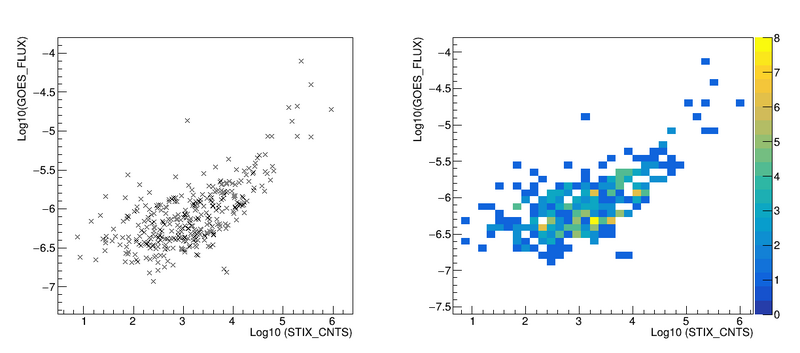Difference between revisions of "GOES Flux vs STIX counts"
| Line 2: | Line 2: | ||
STIX counts are background subtracted and divided by the squared distances between Solar Orbiter and the Sun. | STIX counts are background subtracted and divided by the squared distances between Solar Orbiter and the Sun. | ||
1045 flares with Earth look-angles smaller than 90 degrees were selected. ]] | 1045 flares with Earth look-angles smaller than 90 degrees were selected. ]] | ||
| − | [[File:Goes-stix-flux-fit.png|600px|thumb|none| Fig. 2 A profile of the histogram shown in Fig. 1. A cubic function fitted to the profile is also shown. ]] | + | [[File:Goes-stix-flux-fit.png|600px|thumb|none| Fig. 2 A profile of the histogram shown in Fig. 1. The errors are root-mean-squares. A cubic function fitted to the profile is also shown. ]] |
Revision as of 09:13, 18 January 2022
File:Goes-stix-flux-fit.png
Fig. 2 A profile of the histogram shown in Fig. 1. The errors are root-mean-squares. A cubic function fitted to the profile is also shown.
The GOES flux of a solar flare is estimated using
flux=10^(p0+p1*x+p2**x^2+p3*x^3),
with x=log10(stix_peak_counts)/r^2
where p0, p1, p2 are the parameters from the curve fit, peak_counts is the STIX QL LC peak
counts and r is the distance between the Sun and solar orbiter in units of au.
The error of an estimated flux is considered to be the same as the error of its nearest data point.
